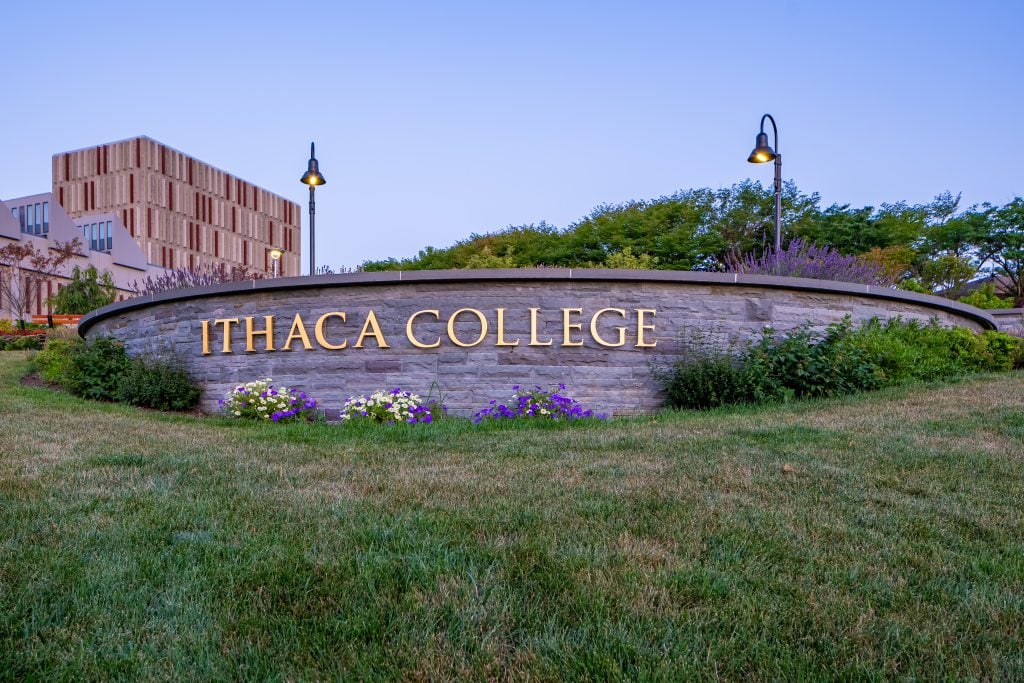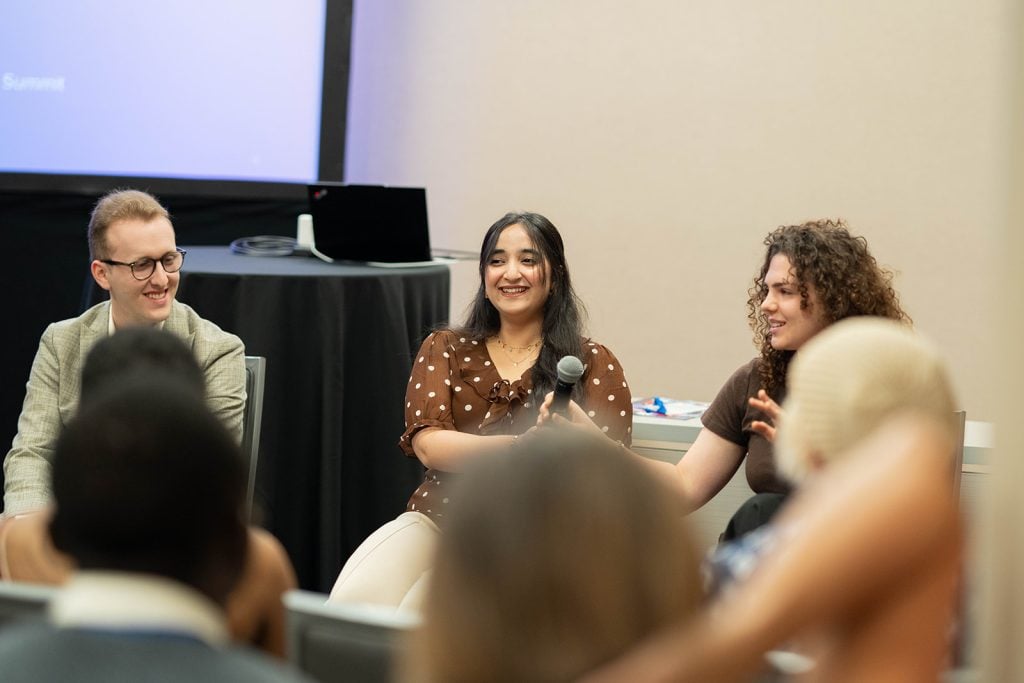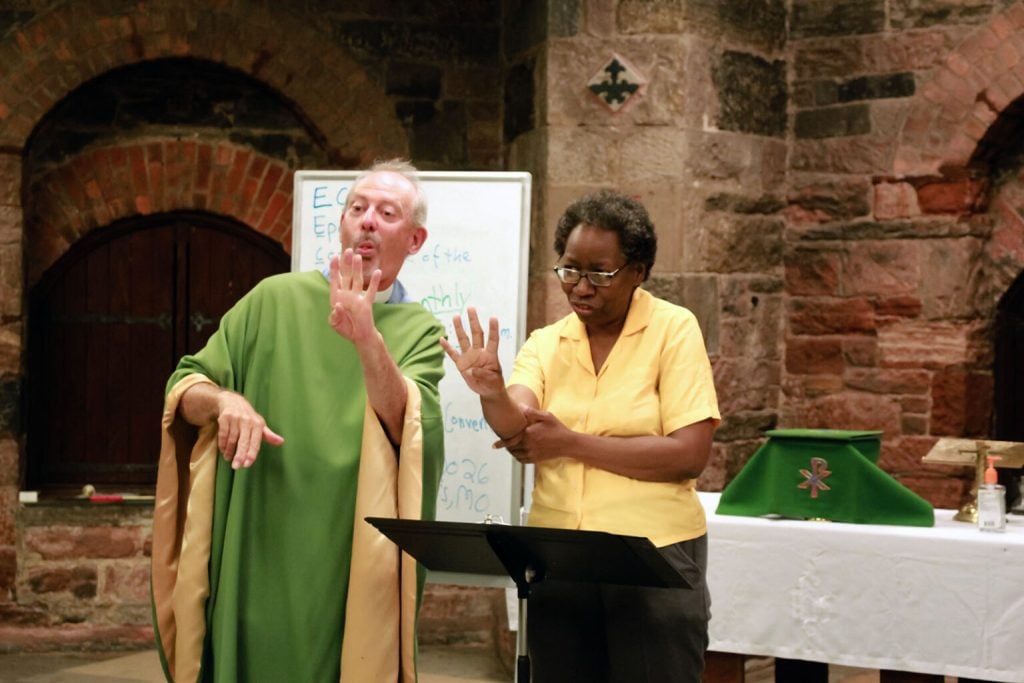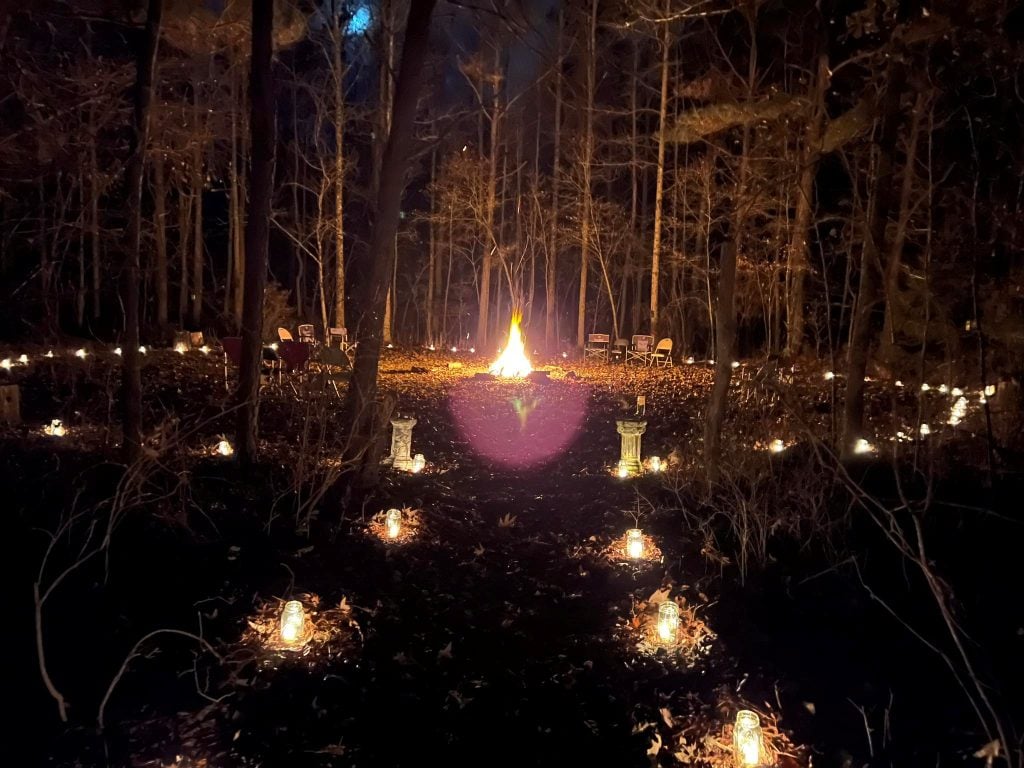This Fourth of July, we celebrate the foundational values of our diverse democracy: the right to free and fair elections, the freedom to religious expression (of any faith or none), the pursuit of the common good, and the possibility of pluralism. On this first Independence Day since the 2024 election, Americans can look to the work of countless campus communities whose commitments to bridgebuilding are countering a narrative of division.
Encouraging college and university communities to embody the values of bridgebuilding across lines of religious, political, and ideological difference, Interfaith America’s Strengthening the Campus Community Grants offered campus leaders, as IA’s Carr Harkrader put it, the chance to “engage in the difficult, but essential, work of bridgebuilding” in this unique moment of our nation’s history.
IA connected with four Strengthening the Campus Community grant recipients whose communities mobilized in pursuit of the common good after a particularly contentious election season. They reflected on the ways their neighbors demonstrated the values of an interfaith America this past semester.
Miami University of Ohio, Oxford, OH
In partnership with Wesley Campus Ministry, Interfaith Photovoice, and the Miami University Office of Transformational and Inclusive Excellence, the Interfaith Center at Miami of Ohio facilitated a three-part interactive workshop series exploring faith, spirituality, and identity through personal photography and reflection. More than two dozen students and other campus community members were invited to capture and share photos exploring how their beliefs, practices, and values shape them and help them flourish. Participants were then invited to join in dialogue with one another in hybrid and in-person settings, over meals, and ultimately showcase their artwork at an end-of-semester celebration.
Roman Williams
Executive Director, Interfaith Photovoice
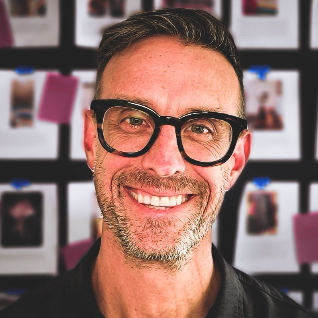
IA: How did your project help participants engage across religious or ideological lines?
“During photovoice sessions…[participants] had the opportunity to ask questions of genuine curiosity. And the answers to these questions helped everyone understand one another more deeply. The process also activated empathy: seeing through someone else’s lens is the contemporary equivalent to walking a mile in someone’s shoes or sandals. By the end of the process, people who may have held very different identities built new relationships and deepened others.”
Geneva Blackmer
Interim Director for the Interfaith Center at Miami University

IA: How do you think campus bridgebuilding initiatives can contribute to a stronger democracy?
“Campus bridgebuilding initiatives that embrace religious pluralism help strengthen democracy by affirming one of the nation’s core values: the freedom to believe, belong, and worship in diverse ways. Religious pluralism is not a threat to democracy—it’s one of its foundational strengths. By fostering dialogue across lines of faith and worldview, campuses empower students to lead with empathy and uphold the inclusive ideals at the heart of a thriving democracy.”
University of St. Thomas, St. Paul, MN
Rising senior Naomi Peters organized a service event with Second Harvest Heartland, a local hunger relief organization. Naomi coordinated with leaders from 15 clubs at University of St. Thomas, including the Muslim Student Association, Hmong club, African Nations Student Association, Campus ministry, and the Jewish Law Student Association. Together, a diverse group of nearly 50 students served at Second Harvest Heartland, packaging food for two hours. Then, the group shared food and fellowship at a local restaurant.
Naomi Peters
Rising senior, majoring in Finance and Entrepreneurship with minors in Catholic studies and Interfaith Leadership

IA: What feedback did you hear from your community?
“After serving to address local food insecurity, I asked participants to anonymously reflect on two questions: ‘Why do you serve?’ and ‘does your faith play a role in this?’
Students shared the following:
‘I serve to give to others—especially out of my privilege.’
‘My personal values of compassion, integrity, and respect shape my purpose.’
‘Yes. My faith emphasizes sadaqah—giving to those in need.’
In these short reflections, among many more, I saw pluralism at work—not just in identity, but in shared action rooted in diverse motivations.
Too often, we think of interfaith work as dialogue in a circle. But here’s the truth: shared service is shared meaning. Shared meals are shared stories. Small reflections unlock deep purpose.”
Trevecca Nazarene University, Nashville, TN
Trevecca hosted a night of food, conversation, and discussion on how Christian faith and politics interact. Students, staff, and faculty joined to hear four panelists’ perspectives representing different Christian denominations, including: Roman Catholic, Nazarene, Eastern Orthodox, Presbyterian/African American church backgrounds. In addition to the panel, participants had long dinner discussions after the panel among panelists and student participants on topics relating to faith and politics.
Justin Jose
Director of Leadership and Community Engagement, Center for Student Development

IA: What unique role can students and campus communities play in combatting polarization?
“The hope is that the place and the purpose of universities and colleges is to engage ideas. Unfortunately, there have been some obvious challenges to that premise, but I still think that premise remains. The hope, too, is that [students] learn how to critically engage ideas in light of career development. [Universities] are a perfect place to be able to provide ‘Bridging the Gap’ type of skills to students, who can utilize those [through] the ideas that they’re interacting with, engaging with, testing out, and taking on.”
Hendrix College, Conway, AR
Hendrix College’s Interfaith Club, supported by faculty and staff and led by rising junior Neil Dogra, held two events for their campus community. The first was a Holi celebration, where the entire campus was invited to participate in the Hindu festival of colors, enjoy Indian food, and be in community with one another. The Interfaith Club also worked to compile and distribute fresh food, canned goods, hygiene supplies, and feminine products to Conway residents in need. Facilitated by Hendrix staff member Tammy Vannaman and in partnership with local grocery stores and small businesses, they hosted a hot meal, distributed supplies, and shared stories and connections with Conway community members experiencing homelessness.
Neil Dogra
Rising junior, majoring in Biochemistry and Religious Studies

IA: What unique role can students and campus communities play in combatting polarization?
“The hope is that the place and the purpose of universities and colleges is to engage ideas. Unfortunately, there have been some obvious challenges to that premise, but I still think that premise remains. The hope, too, is that [students] learn how to critically engage ideas in light of career development. [Universities] are a perfect place to be able to provide ‘Bridging the Gap’ type of skills to students, who can utilize those [through] the ideas that they’re interacting with, engaging with, testing out, and taking on.”

